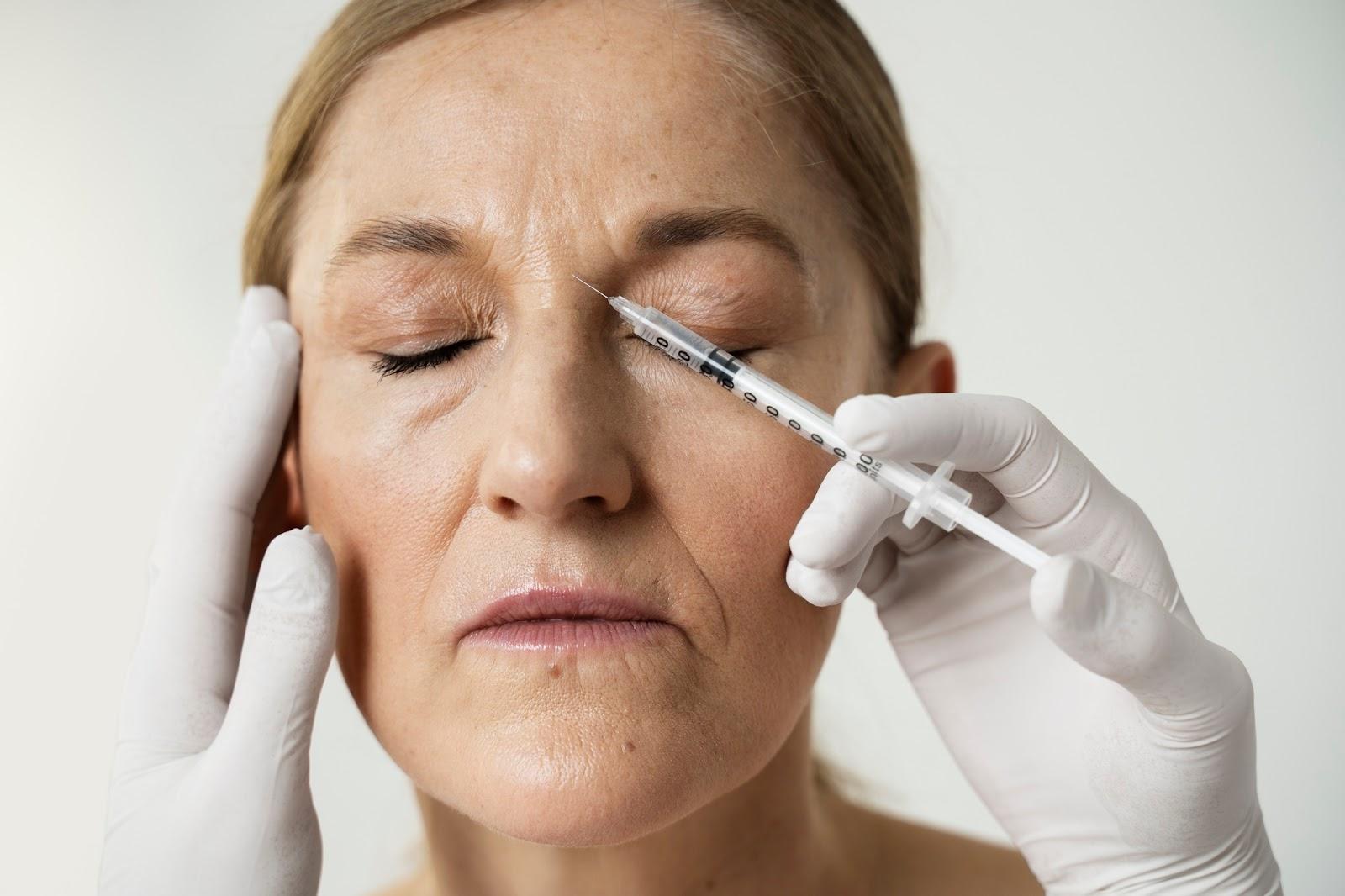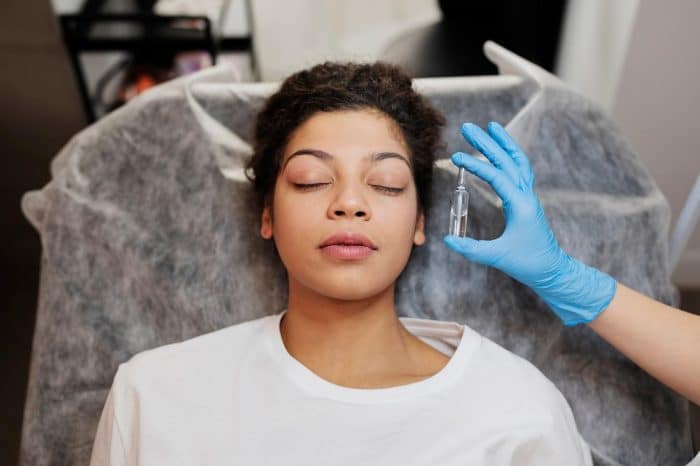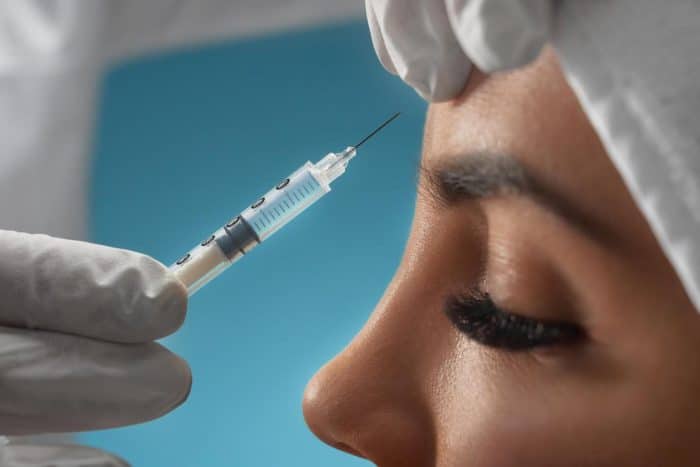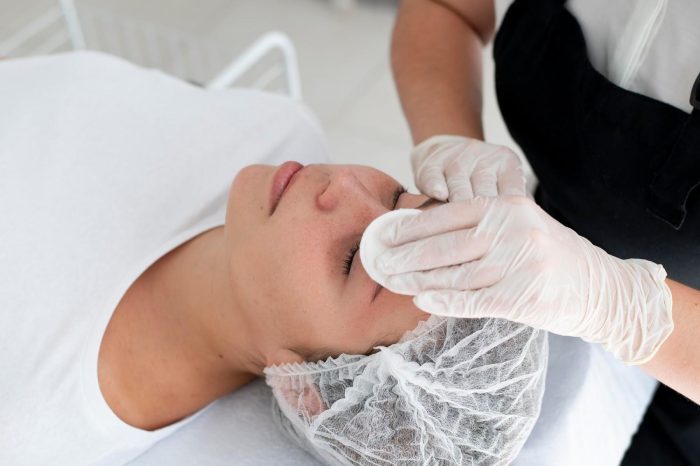
In 2022, the American Society of Plastic Surgeons (ASPS) reported a surge in the popularity of neuromodulator injections. Cosmetic procedures involving these treatments jumped by 73% compared to previous years. The ASPS also revealed that specialists performed nearly 9 million such procedures in the United States alone, reflecting the growing desire for non-surgical solutions to achieve facial rejuvenation.
Two prominent choices when considering neuromodulator injections are Dysport and Xeomin. Both are minimally invasive procedures utilizing a purified protein to temporarily relax facial muscles, offering a refreshed and youthful appearance. But despite their similarities, there are subtle differences between Dysport and Xeomin.
This article explores the key characteristics of Dysport and Xeomin, comparing their formulations and effects to help patients choose the option that aligns with their aesthetic goals.
Key Takeaways
- Dysport and Xeomin are both neurotoxins commonly used for facial aesthetic treatments.
- Medical professionals must make informed decisions when choosing between these two treatments. Specialists can base these decisions on the differences in their formulations, duration of action, and safety profiles.
- Target areas, injection techniques, and patient preferences are considerations for facial aesthetic treatments, which can influence the choice between Dysport and Xeomin.
Comparative Analysis of Dysport and Xeomin
Neurotoxin injections are a class of cosmetic treatments that involve administering botulinum toxin to reduce the appearance of wrinkles and fine lines. These injections temporarily paralyze the muscles, leading to wrinkle formation and a smoother and more youthful appearance.
The most common areas treated include frown lines (between the brows), crow’s feet (around the eyes), and forehead lines. However, doctors can also use neurotoxin injections for therapeutic purposes, such as treating chronic migraines and excessive sweating.
Dysport and Xeomin are two of the leading brands of neurotoxin injections available today. While both products share several similarities, there are also some key differences to consider when choosing between them.
- Dysport: This treatment received FDA approval back in 2009 for the treatment of moderate to severe glabellar lines (frown lines). Dysport is a purified botulinum toxin type A with a slightly different molecular structure than other brands. Dysport also contains inactive ingredients, such as lactose and albumin.
- Xeomin: This neurotoxin injection received FDA approval in 2010 for the cosmetic treatment of glabellar lines. Unlike Dysport, Xeomin is a “naked” formulation containing only the purified botulinum toxin type A and no added ingredients.
Dysport and Xeomin effectively treat dynamic wrinkles from repeated muscle movements. However, they differ in their onset of action, with Dysport acting faster than Xeomin. Additionally, the absence of complex proteins in Xeomin may lead to a reduced risk of allergic reactions compared to Dysport.
Considerations for Facial Aesthetic Treatments

Patients and aesthetic specialists should understand how different Dysport and Xeomin are from each other, especially in their practical application for facial aesthetics. Here is a breakdown of critical considerations for these injectables:
Target Areas for Treatment
Dysport and Xeomin are FDA-approved for treating forehead lines, including horizontal forehead lines and the “11” lines between the eyebrows. They are also used off-label for other areas of the face, such as crow’s feet, smile lines, and neck bands.
Dysport is particularly effective in treating moderate to severe frown lines because it spreads slightly more, making it suitable for larger areas like the forehead. Healthcare professionals can also use Dysport for lip flips, improving a patient’s facial symmetry.
Since Xeomin is a “naked” neurotoxin, it has a more targeted effect. Healthcare professionals may turn to this treatment when treating precise areas, such as the perioral lines (around the mouth) or bunny lines (on the nose).
Injection Techniques for Dysport and Xeomin
The injection techniques for Dysport and Xeomin are similar, with both being administered directly into the muscles responsible for wrinkle formation. The key to successful treatment lies in the precision of the injections, targeting specific muscles to achieve a natural-looking reduction in wrinkles while preserving facial expressions.
- Dysport: Dysport’s faster spread may necessitate a more conservative injection approach, with lower initial doses, to ensure precise targeting and minimize the risk of unwanted effects.
- Xeomin: The lack of inactive ingredients in Xeomin might allow for more flexibility in the injection technique, as the product is less likely to be affected by surrounding tissues.
Patient Preferences and Customization
When choosing between Dysport and Xeomin, patient preferences play a significant role. Some patients prefer the quicker onset of Dysport. In contrast, others may opt for Xeomin due to its unique formulation, which minimizes the risk of developing antibodies and potentially increases its effectiveness over time.
Customization of treatment is vital, and a thorough consultation with a healthcare provider can help determine the best approach based on individual skin type, treatment area, and desired outcomes.
Formulations and Mechanisms of Action

Dysport’s Composition and Mode of Action
Dysport (abobotulinumtoxinA) is a purified botulinum toxin type A with a slightly different molecular structure than other brands. It also contains inactive ingredients, such as lactose and albumin, which act as stabilizers and aid in reconstitution.
Like other neurotoxins, Dysport works by temporarily blocking the release of acetylcholine, a neurotransmitter responsible for muscle contraction. Dysport binds to nerve endings when injected into targeted muscles, preventing them from releasing acetylcholine. As a result, the muscles relax, reducing wrinkles and lines caused by repeated muscle contractions.
Xeomin’s Composition and Mode of Action
Xeomin contains incobotulinumtoxinA, a pure form of botulinum toxin type A, without accessory proteins. This unique purification process reportedly reduces the risk of antibody formation that could lead to treatment resistance.
Like Dysport, Xeomin also works by blocking the release of acetylcholine at the neuromuscular junction. This temporary inhibition of nerve signals results in temporary paralysis of the muscle, reducing the appearance of dynamic wrinkles.
Clinical Efficacy and Duration of Action

Dysport and Xeomin have established clinical efficacy in treating moderate to severe glabellar lines (frown lines) between the brows. Healthcare professionals have widely used Dysport for aesthetic purposes, particularly dynamic wrinkles that appear with facial movements.
On the other hand, Xeomin contains incobotulinumtoxinA, making it practical for similar indications. Most aesthetic specialists know Xeomin for its naked formulation, which does not include complex proteins, minimizing the risk of antibody formation once injected.
Clinical studies have demonstrated that Dysport and Xeomin provide significant aesthetic improvement when used for facial rejuvenation. Patients report high satisfaction with the results, including reduced wrinkles and a more youthful facial contour.
The efficacy of these treatments is not only in their ability to reduce wrinkles but also in their contribution to overall facial aesthetics, enhancing patients’ self-esteem and satisfaction with their appearance.
Duration of Action for Dysport and Xeomin
The duration of action for both Dysport and Xeomin varies depending on individual factors such as metabolism and lifestyle. However, on average, the effects of both treatments are reported to last between 3 to 6 months.
Dysport shows results faster, often within 24 hours of injection, while Xeomin may take 3-4 days to manifest noticeable results. Dysport’s rapid onset of action can particularly appeal to patients seeking quick results.
Regarding the duration of the effects, both Dysport and Xeomin offer a temporary solution for facial wrinkles. Repeat treatments are needed to maintain the aesthetic outcome. The choice between the two may come from individual preferences and the specific treatment goals discussed with a healthcare provider.
Dosing Considerations and Safety Profiles
- Dysport: An experienced professional should tailor Dysport’s dosing to the patient based on the severity of their condition, targeted muscles, and previous response to treatment. For adult spasticity, the maximum recommended total dose (upper and lower limb combined) is 1500 Units. Injections should not be more frequent than every 12 weeks.
- Xeomin: This treatment’s dosing varies based on individual needs and treatment areas. The maximum recommended cumulative dose for any indication should not exceed 400 Units in a treatment session.
Safety Profiles of Dysport and Xeomin
The safety profile of Dysport includes common side effects such as muscle weakness, pain at the injection site, and flu-like symptoms. Serious but rare side effects consist of difficulties with swallowing, speaking, or breathing due to muscle weakness, which can be life-threatening.
Xeomin is known for its ‘naked’ formulation, which may reduce the risk of antibody formation and subsequent treatment resistance. Common side effects are similar to Dysport, including headache, dry mouth, and injection site reactions. Serious side effects are rare but can include the spread of toxin effects, causing symptoms like swallowing and breathing difficulties.
Only qualified healthcare professionals should administer these injections, and patients should discuss their medical history and reactions to botulinum toxin products with their healthcare provider before receiving treatment.
Conclusion
Dysport and Xeomin are valuable options for facial aesthetic treatments, each with unique characteristics and considerations. Medical professionals should carefully evaluate the differences between these treatments to make informed decisions that align with their patient’s needs and treatment goals.
By considering specific target areas, injection techniques, and patient preferences, medical professionals can effectively choose between Dysport and Xeomin to achieve optimal outcomes in facial aesthetics.
About: DoctorMedica is your trusted supplier of top-quality dermal fillers, viscosupplements, and more for your medical practice. If you’re looking to buy Dysport online, contact our dedicated sales agents at Doctor Medica for guidance.
FAQs
1. What’s the difference between Dysport and Xeomin?
Dysport tends to act faster and spread to a slightly larger area, while Xeomin’s formulation has no accessory proteins, potentially reducing antibody resistance.
2. Can I use Dysport or Xeomin for areas other than my forehead?
Experts can use Dysport and Xeomin off-label in other areas to address signs of aging, such as crow’s feet, frown lines, and neckbands.
3. How long does it take for Dysport to work?
Dysport typically shows effects within 2-3 days after treatment, with full results often visible by day 7.
References
The American Society of Plastic Surgeons. 2022 ASPS Procedural Statistics Release. https://www.plasticsurgery.org/documents/News/Statistics/2022/plastic-surgery-statistics-report-2022.pdf
Samizadeh S, De Boulle K. Botulinum neurotoxin formulations: overcoming the confusion. Clinical, Cosmetic and Investigational Dermatology. 2018;Volume 11:273-287. doi:10.2147/ccid.s156851
Fabi SG, Pavicic T, Braz A, Green JB, Seo KK, Van Loghem JA. Combined aesthetic interventions for prevention of facial ageing, and restoration and beautification of face and body. Clinical, Cosmetic and Investigational Dermatology. 2017;Volume 10:423-429. doi:10.2147/ccid.s144282
Related Articles
Joanna Carr
Do You Ovulate on Nexplanon? – How the Implant Affects Ovulation
Understand the impact of Nexplanon on ovulation. Learn whether ovulation occurs while using this birth control implant and how it influences menstrual...
Joanna Carr
Saxenda Starting Dose and Injection Schedule
Saxenda is a prescription weight loss medication containing liraglutide, designed for adults who are overweight or obese and is used in combination wi...
Joanna Carr
Restylane or Botox: Optimal Treatment for Facial Rejuvenation
We'll explore how each treatment works, the areas they target most effectively, and each option's potential benefits and drawbacks.


